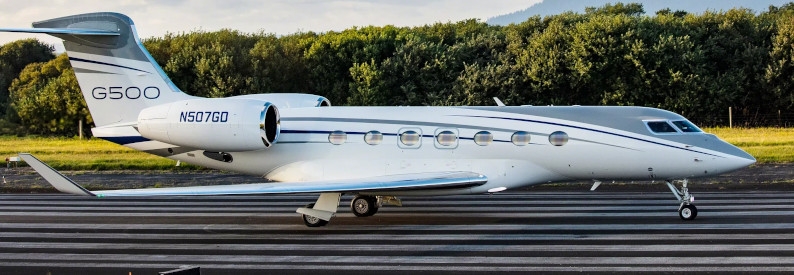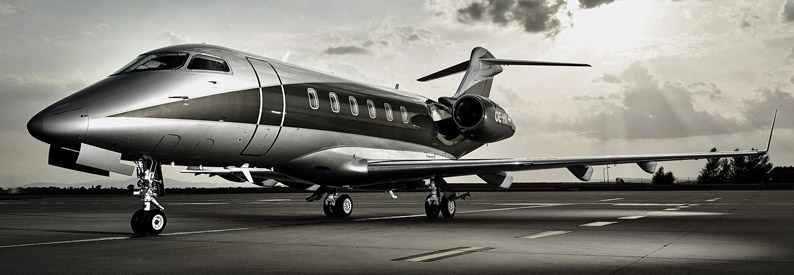SPARFELL Luftfahrt (LDX, Vienna) sees its Austrian air operator's certificate (AOC) as a very attractive proposition for aircraft owners due to the efficiency, knowledge, and approachability of the local regulator. Managing Director Bernhard Wipfler said in an interview with ch-aviation at the operator's headquarters at Vienna airport that this was one of the reasons SPARFELL continues to grow even as the market cools.
"The Austrian Civil Aviation Authority [Austro Control] is an amazing service provider. They are knowledgeable, reachable, and try to support, and this is something outstanding. It's a huge benefit we have with the Austrian AOC. This is because of the history - there's a lot of people with experience and knowledge of business aviation, it's a big community compared to the size of the country. So our advantage is the Austrian authority and the experience and knowledge that our team has," he said.
While some of SPARFELL's customers are also based in Vienna and can be more willing to place their aircraft on a local AOC, the operator also has many clients from other countries that are drawn to Austria due to the strong reputation of this jurisdiction. SPARFELL continues to work mainly with European aircraft owners, but it also is actively pursuing customers in other markets, including the Middle East and Africa.
SPARFELL does not own any aircraft, and its fleet strategy is driven entirely by its customers and aircraft owners. Aircraft availability for charters varies a lot and is also determined by their owners. Wipfler said that sometimes, aircraft can be made fully available for charter, particularly as the owner is transitioning to new aircraft.
Diversified fleet but "gravity" towards types
Wipfler said it was hard to distinguish any specific trends regarding what aircraft are in demand in the aircraft management business. At this moment, bigger business jets tend to be more popular, but the manager stressed that individual customers can switch their preferences quite quickly if their own business model and travel needs change. The operator does not strictly focus on a specific type or manufacturer.
"Automatically, if you have certain aircraft types, there is gravity, and people come to you because we have this type managed already. But if somebody approaches us for a new type, of course we will have a look at this as well. But in general we focus on, I would say, from midsize upwards," he outlined.
He emphasised that from the management and operating point of view, a midsize jet is not very different from a large one, but "with a bigger aircraft of course you earn more money. If we could choose, we would always take a bigger aircraft." Larger aircraft are also more profitable in the charter market.
SPARFELL has a legacy fleet of Bombardier Business Aircraft Challenger aircraft, currently comprising three Challenger 300s and three Challenger 350s on its Austrian AOC. It also operates one Global 5000, two Global 7500s, and two Global Express XRS. This dates back to when the company was part of Niki Lauda's LaudaMotion and then spun off as LaudaMotion Executive. Later still, SPARFELL Aviation Group acquired the operator in 2019.
The availability of multiple units of the same type is a strong benefit for the charter business, especially during the busy summer seasons when the operator can increase efficiency by - if the owners agree - rotating the aircraft of the same type. This allows it to maximise the utilisation of the subfleet for charters without compromising the availability for owners.
The operator's non-Bombardier fleet comprises one Cessna Citation CJ2+, one Falcon 7X, one Gulfstream G280, one G450, one G650, two G650ERs, one Praetor 600, one Legacy 500, and one ACJ319-100 OE-LJC (msn 1556) registered to the company in May 2024 but still parked at Basel/Mulhouse/Freiburg, CH.
International AOCs
While SPARFELL Aviation Group is based in Switzerland, the holding does not have a Swiss AOC. Besides its largest Austrian one, it also operates SPARFELL San Marino and SPARFELL Malta. It has offices in Geneva, Vienna, San Marino, Washington, Malta, Madrid, and Paris, and a combined fleet of 34 aircraft of 18 types from seven OEMs (Airbus, Bombardier Business Aircraft, Cessna Aircraft Company, Dassault Aviation, Embraer Executive Jets, Learjet, and Gulfstream Aerospace).
Wipfler explained that the Sanmarinese AOC, which launched in 2020, started due to a specific customer demand. While the fact that San Marino is not an EASA member presents some challenges - for example, SPARFELL needed Third Country Operator (TCO) status for this unit - it also offers opportunities thanks to this status. In turn, the Maltese AOC allows SPARFELL to capture additional market demand for aircraft management.
"The SPARFELL owners saw that there is a market which you cannot cover [with the Austrian AOC]. If you look at Vienna airport, you hardly see any Maltese-registered aircraft permanently based here, but if you look out the window in Geneva, this is a popular solution. The advantage of Malta compared to Austria is that you can register the lien on aircraft there, which you cannot do in Austria," he explained.
According to the current Transport Malta register, SPARFELL operates four aircraft on the 9H- register: one Challenger 3500, one Global 6000, one Global 6500, and one GVII-G500.
Wipfler said that for now SPARFELL has no strategic short- to mid-term plans to add more AOCs, although this could always change depending on the demand and SPARFELL owners' decisions.
Market constraints
SPARFELL Luftfahrt continues to grow on the back of its strong aircraft management business, but Wipfler conceded that the charter market is cooling off. After very strong 2022 and 2023, the market could shrink in 2024. Big sporting events in Europe, such as the Euro 2024 football championship in Germany and the Olympic Games in Paris are driving demand predominantly for smaller business aircraft, which is not SPARFELL's core niche.
Despite the growing political pressure, the business charter market in Europe is not shrinking - albeit also not growing, Wipfler admitted. He stressed that from the industry's perspective, the big problem is the misrepresentation in the political and social discussion, which disregards the fact that business jets are predominantly used by corporations as a working tool rather than for private use. Wipfler emphasised that the sector's need to reduce its carbon footprint is obvious.
Ultimately, given that SPARFELL does not own any aircraft itself, its job is to advise the owners and operate the aircraft in line with any regulatory changes. Keeping track of all the requirements in various jurisdictions is one of the biggest day-to-day headaches for the operator. However, in terms of the long-term strategy of aircraft, SPARFELL's role is secondary to that of the aircraft owners.




